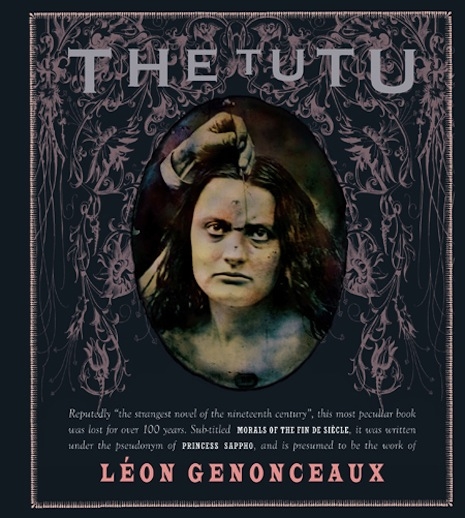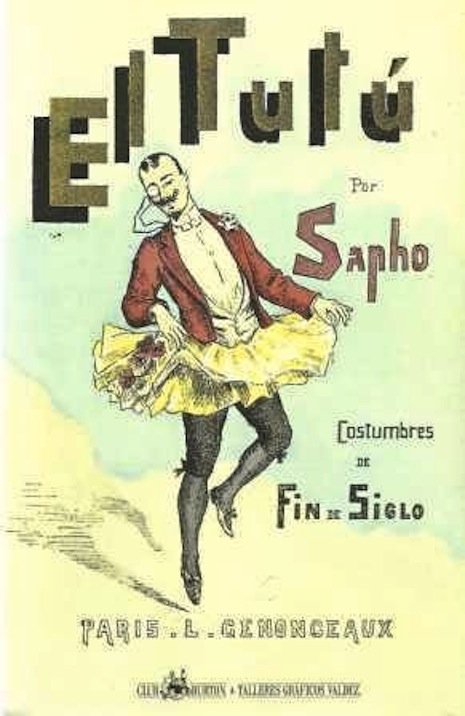
Its author was a literary scoundrel par excellence, its very existence was long considered a hoax until it resurfaced in the 1990s, and its many boosters consider it a scurrilous lost masterpiece worthy of comparison to James Joyce’s Ulysses.
I refer to Léon Genonceaux’s 1891 novel The Tutu. Last month it appeared in English translation for the very first time.
I have never read The Tutu—indeed, I heard of it for the first time just a few days ago—but the claims made about the apparently scandalous work and its enigmatic author are quite remarkable. Genonceaux’s birth and death dates are always represented as (1856—?), which inevitably raises an intrigued eyebrow. Genonceaux was the first to publish talents as disparate as Arthur Rimbaud and the Comte de Lautréamont. Convicted of publishing an “indecent” novel that featured lesbian material in 1892, Genonceaux fled to London, returned to Paris around 1900, and then fell off the face of the earth for good around 1905. Nobody knows what happened to him.
Information on Genonceaux is scarce; he doesn’t have a Wikipedia page—not even on wikipedia.fr! Nicole Albert, in her essay in Disorder in the Court: Trials and Sexual Conflict at the Turn of the Century (edited by George Robb and Nancy Erber), explains that Genonceaux, after departing for England, was sentenced in absentia to thirteen months in prison and a fine of 3,000 francs for the crime of publishing a “Sapphic” novel called Zé-Boïm (the title is the Hebrew word for “Gomorrah”). Michael R. Finn, in his book Hysteria, Hypnotism, the Spirits, and Pornography: Fin-de-siècle Cultural Discourses in the Decadent Rachilde, passes along the description in the court records of the cover Genonceaux concocted for his edition of Zé-Boïm (the book had already appeared in previous editions) thus: “the drawing represents a half-recumbent woman, her chest naked, one finger of her left hand pointing upwards and, between her legs, the head of a cat.”

The French first edition of Le Tutu (1891), which was printed but never sent to bookstores [Correction: This is obviously the Spanish edition, as commenters pointed out. The first French edition is here.]
The noted Spanish writer Juan Goytisolo has written of the book: “The Tutu has been described as the most mysterious novel of the nineteenth century, it is probably one of the strangest, and certainly one of the most fascinating. … We find in it a clear presentiment (one cannot say influence, since no one read this book) of the audacities of Jarry, Roussel, Breton, Ionesco and Queneau….”
And get a load of this promotional text from Atlas Press, publisher of The Tutu: “Genonceaux appears to have been intent on outraging just about everyone, and The Tutu is gleefully Nietzschean in its dismemberment of contemporary morality. It is simultaneously a sort of ultimate ‘decadent novel’ and outlandishly modern; it is also repellent, infantile and deeply cynical. Yet despite all its absurdities and extravagances, in the end it somehow manages to appear compassionate, poetic, funny… and even—most absurdly of all—rational.” Wow!
Here’s the Artbooks website on the book:
The Tutu is one of those mythical beasts—a great lost book; a book that, if it had been published when it was written (in 1891), would have been one of the defining works of late nineteenth-century French literature. … Willfully scatological, erotic and gleefully Nietzschean in its dismemberment of fin-de-siecle morality, The Tutu is at once a sort of ultimate Decadent delirium and also a proto-modernist novel in the vein of Ulysses. Its existence was first posited in 1966 by a famous literary hoaxer, and until a handful of copies turned up some years later, in the early 1990s, it was presumed to be a fabrication.
On the same website, Marc Lowenthal of Wakefield Press adds,
When I first read about this book’s forthcoming publication, it had almost sounded like a literary artifact that Atlas Press would have had to invent if it hadn’t existed. Now that I’ve read it, it still seems too good to be true: the missing, unknown link between the French fin-de-siècle and Alfred Jarry’s Ubu roi and all that was to follow.
I don’t know about you, but this book sounds utterly fantastic. Hell, maybe all of these protestations of the Atlas Press “having to have invented it” and its previous status as “a hoax” are playful winks to the audience? Maybe The Tutu really IS too good to be true, maybe this book will turn out to be a retro-engineered literary masterpiece? I really hope not, but either way, I can’t wait to get my hands on it.
via Writers No One Reads
Previously on Dangerous Minds: